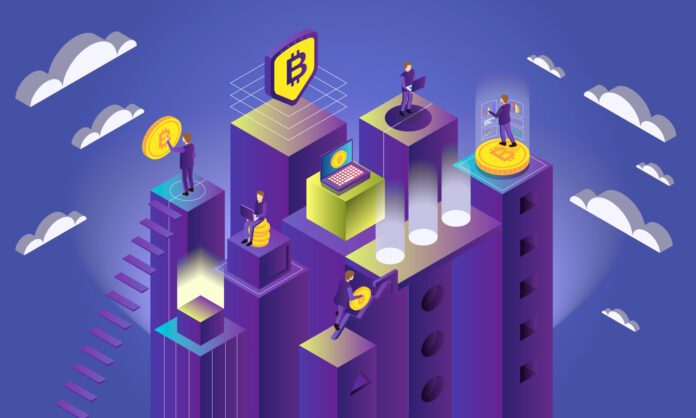Blockchain technology has revolutionized various industries by providing decentralized, transparent, and secure systems for recording transactions. However, as blockchain adoption grows, so do the challenges associated with its scalability. Scalability refers to the ability of a blockchain network to handle an increasing number of transactions efficiently. In this comprehensive guide, we will explore the challenges and opportunities of blockchain scalability, delving deep into the technical aspects, potential solutions, and future prospects. By understanding these dynamics, stakeholders can better navigate the evolving landscape of blockchain technology.
Understanding Blockchain Scalability
What is Blockchain Scalability?
Blockchain scalability is the capacity of a blockchain network to process a growing number of transactions per second (TPS) without compromising performance. As more users and applications rely on blockchain, the demand for higher TPS increases. Scalability is critical for the widespread adoption of blockchain technology in areas such as finance, supply chain, and healthcare.
Key Components of Scalability:
- Transaction Throughput: The number of transactions a network can process per second.
- Latency: The time it takes for a transaction to be confirmed.
- Resource Efficiency: The computational and energy resources required to maintain the network.
Challenges of Blockchain Scalability
1. Limited Transaction Throughput
One of the primary challenges of blockchain scalability is limited transaction throughput. For instance, Bitcoin processes around 7 TPS, while Ethereum handles about 15-30 TPS. These rates are insufficient for large-scale applications compared to traditional payment systems like Visa, which can process thousands of TPS.
Causes:
- Block Size Limit: The maximum size of a block restricts the number of transactions that can be included.
- Block Time: The time interval between consecutive blocks adds a delay to transaction confirmation.
2. High Latency
High latency is another significant challenge. The time it takes for a transaction to be confirmed can be several minutes to hours, depending on network congestion and transaction fees.
Factors Contributing to Latency:
- Network Congestion: Increased usage can lead to longer wait times for transaction confirmations.
- Consensus Mechanisms: The method by which a blockchain network reaches consensus can impact latency.
3. Resource Intensity
Blockchain networks often require substantial computational and energy resources, especially those using proof-of-work (PoW) consensus mechanisms. This not only raises operational costs but also poses environmental concerns.
Examples of Resource Intensity:
- Bitcoin Mining: The computational power needed for mining Bitcoin has led to significant energy consumption.
- Proof-of-Work Challenges: High energy usage and specialized hardware requirements.
4. Security Trade-offs
Increasing transaction throughput can sometimes compromise security. For example, larger block sizes can lead to centralization, as only entities with significant resources can handle the increased data load.
Security Considerations:
- 51% Attacks: Higher throughput may make networks more susceptible to majority attacks.
- Centralization Risks: Larger nodes could dominate the network, undermining decentralization.
Opportunities for Blockchain Scalability
1. Layer 1 Solutions
Layer 1 solutions involve making changes to the blockchain protocol itself to enhance scalability. These solutions aim to improve the core blockchain’s capacity to handle transactions.
Examples:
- Sharding: Divides the blockchain into smaller, more manageable pieces called shards, each capable of processing transactions independently.
- Block Size Increase: Increasing the size of blocks to allow more transactions per block.
2. Layer 2 Solutions
Layer 2 solutions build on top of the existing blockchain, creating secondary frameworks that interact with the main chain to enhance scalability without altering the core protocol.
Examples:
- Lightning Network: A second-layer protocol for Bitcoin that enables fast, low-cost transactions by creating off-chain payment channels.
- Plasma: A framework for building scalable decentralized applications by creating child chains that communicate with the main Ethereum chain.

3. Alternative Consensus Mechanisms
Exploring alternative consensus mechanisms can improve scalability by reducing the computational and energy requirements associated with traditional PoW.
Examples:
- Proof of Stake (PoS): Validators are chosen based on the number of tokens they hold and are willing to “stake” as collateral.
- Delegated Proof of Stake (DPoS): Token holders vote for a small number of delegates who validate transactions on their behalf.
4. Hybrid Solutions
Combining different approaches can offer a balanced solution to scalability challenges. Hybrid models can leverage the strengths of various techniques to create a more scalable and efficient blockchain network.
Examples:
- Hybrid PoW/PoS: Combining PoW for block creation and PoS for block validation to enhance security and efficiency.
- State Channels: Allowing parties to transact off-chain and only settle on-chain periodically, reducing the load on the main chain.
Case Studies: Real-World Applications
1. Ethereum 2.0
Ethereum 2.0, also known as Eth2 or Serenity, aims to address scalability issues through a series of upgrades, including the transition from PoW to PoS and the implementation of sharding.
Features of Ethereum 2.0:
- Beacon Chain: Coordinates the network and manages validators.
- Shard Chains: Split the network into 64 shards, each capable of processing transactions independently.
Impact:
- Increased Throughput: Expected to handle thousands of TPS.
- Reduced Latency: Faster transaction confirmations.
2. Solana
Solana is a high-performance blockchain platform designed for scalability. It uses a unique consensus mechanism called Proof of History (PoH) combined with PoS to achieve high throughput and low latency.
Key Features:
- High Throughput: Capable of processing over 50,000 TPS.
- Low Latency: Transactions are confirmed in seconds.
Impact:
- Scalable dApps: Supports complex decentralized applications with high user demand.
- Efficient Transactions: Low transaction fees and fast processing.
Future Prospects of Blockchain Scalability
1. Continued Innovation
The blockchain community is continuously innovating to find new solutions to scalability challenges. Research and development efforts focus on improving existing protocols and creating new frameworks.
Emerging Technologies:
- Zero-Knowledge Proofs: Enhancing privacy and scalability by allowing transactions to be verified without revealing details.
- Rollups: Combining multiple transactions into a single transaction to reduce on-chain data and increase throughput.
2. Interoperability
Interoperability between different blockchain networks can enhance scalability by enabling the transfer of assets and data across chains without relying on a single network.
Examples:
- Polkadot: A multi-chain network that facilitates interoperability between different blockchains.
- Cosmos: A decentralized network of independent parallel blockchains, each powered by Byzantine Fault Tolerance (BFT) consensus algorithms.
Impact:
- Resource Optimization: Distributing the load across multiple networks.
- Enhanced Functionality: Enabling cross-chain smart contracts and applications.

3. Regulatory Support
Supportive regulatory frameworks can facilitate the adoption of scalable blockchain solutions by providing clear guidelines and fostering innovation.
Examples:
- Regulatory Sandboxes: Allowing blockchain projects to experiment and innovate within a controlled environment.
- Government Initiatives: Governments investing in blockchain research and development.
Impact:
- Increased Adoption: Clear regulations can encourage more businesses to adopt blockchain technology.
- Innovation Incentives: Supportive policies can spur further advancements in scalability solutions.
Key Takeaways
- Understanding Scalability: Scalability is crucial for blockchain networks to handle a growing number of transactions efficiently. It involves improving transaction throughput, reducing latency, and optimizing resource usage.
- Challenges: Limited transaction throughput, high latency, resource intensity, and security trade-offs are the primary challenges hindering blockchain scalability.
- Opportunities: Layer 1 solutions (sharding, block size increase), Layer 2 solutions (Lightning Network, Plasma), alternative consensus mechanisms (Proof of Stake, Delegated Proof of Stake), and hybrid solutions offer promising approaches to enhance scalability.
- Case Studies: Real-world applications like Ethereum 2.0 and Solana demonstrate the practical implementation of scalability solutions, showcasing significant improvements in throughput and latency.
- Future Prospects: Continued innovation, interoperability, and regulatory support are essential for the future of blockchain scalability, enabling more robust and scalable blockchain networks.
Additional Resources
For those interested in further exploring the challenges and opportunities of blockchain scalability, here are some additional resources and articles:
- Ethereum 2.0 Sharding
- Lightning Network Explained
- Proof of Stake vs. Proof of Work
- Hybrid Blockchain Models
- Solana Whitepaper
- Zero-Knowledge Proofs
- Polkadot Overview
- Blockchain Regulations
Conclusion
Blockchain scalability is both a challenge and an opportunity for the future of decentralized technology. By understanding the complexities involved and exploring innovative solutions, we can pave the way for more scalable and efficient blockchain networks. This will not only enhance the performance and usability of blockchain applications but also drive broader adoption across various industries.
Embracing the opportunities presented by Layer 1 and Layer 2 solutions, alternative consensus mechanisms, and hybrid models will be key to overcoming scalability challenges. As the blockchain ecosystem continues to evolve, ongoing research, development, and collaboration will play crucial roles in shaping the future of scalable blockchain technology.
Stay informed, stay innovative, and explore the endless possibilities that scalable blockchain networks can offer. The journey towards achieving blockchain scalability is ongoing, and the potential benefits for global connectivity, security, and efficiency are immense.
Final Thoughts
As we move forward, it’s essential to keep an eye on emerging trends and advancements in blockchain scalability. By staying updated with the latest developments and actively participating in the blockchain community, we can contribute to the growth and success of this transformative technology.
Whether you are a developer, entrepreneur, or enthusiast, understanding blockchain scalability will empower you to make informed decisions and leverage the full potential of blockchain technology. Embrace the challenges, explore the opportunities, and be a part of the exciting future of scalable blockchain networks.



